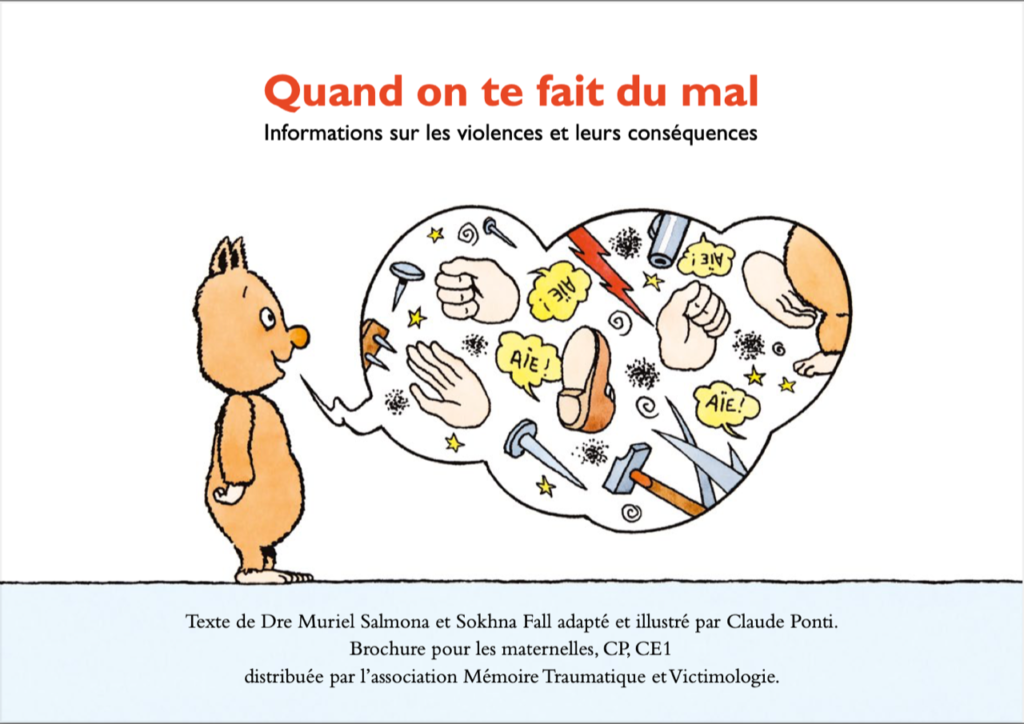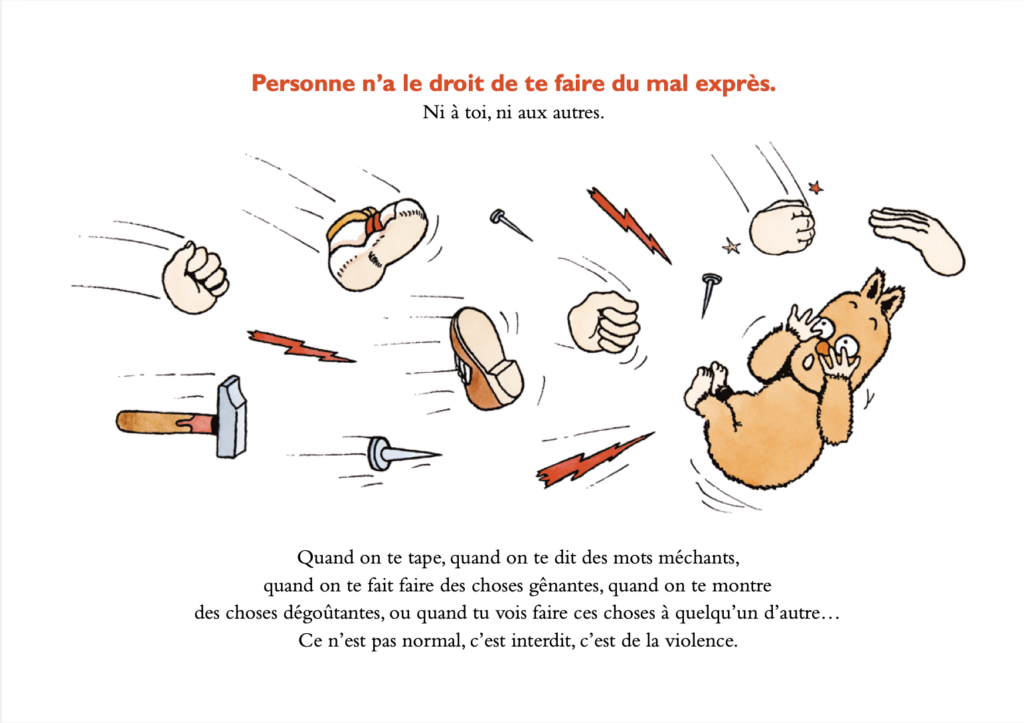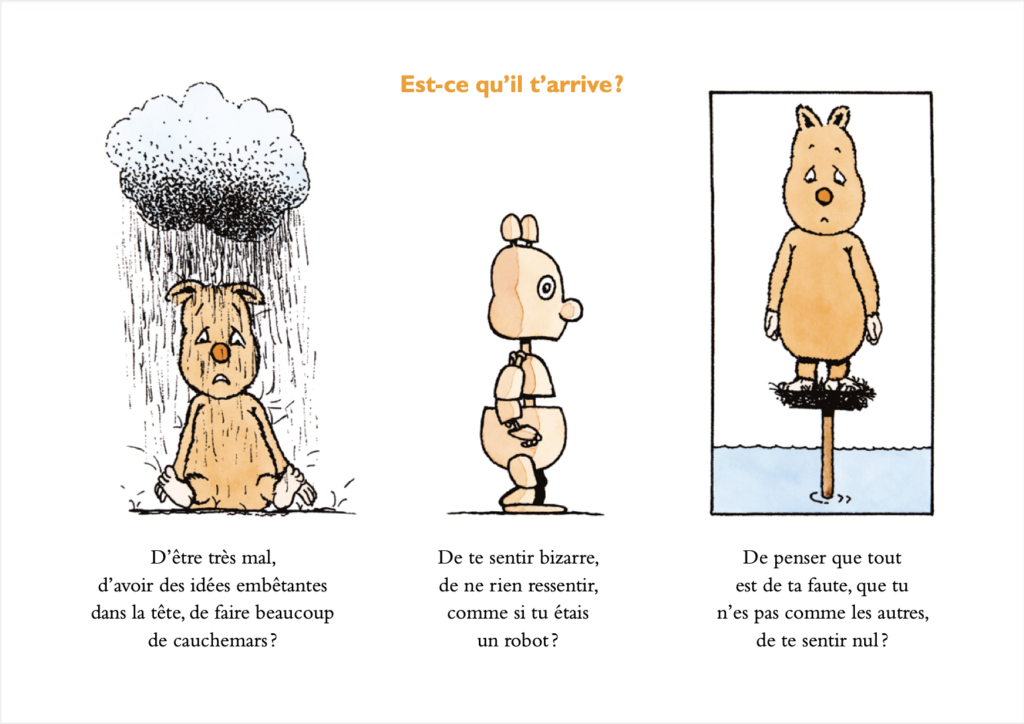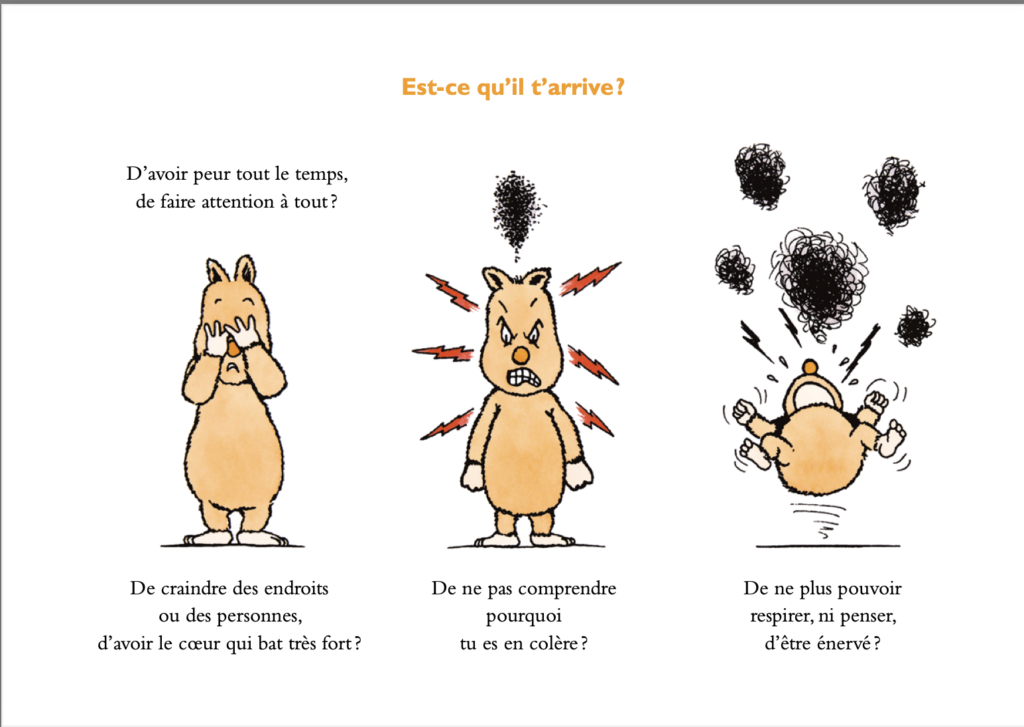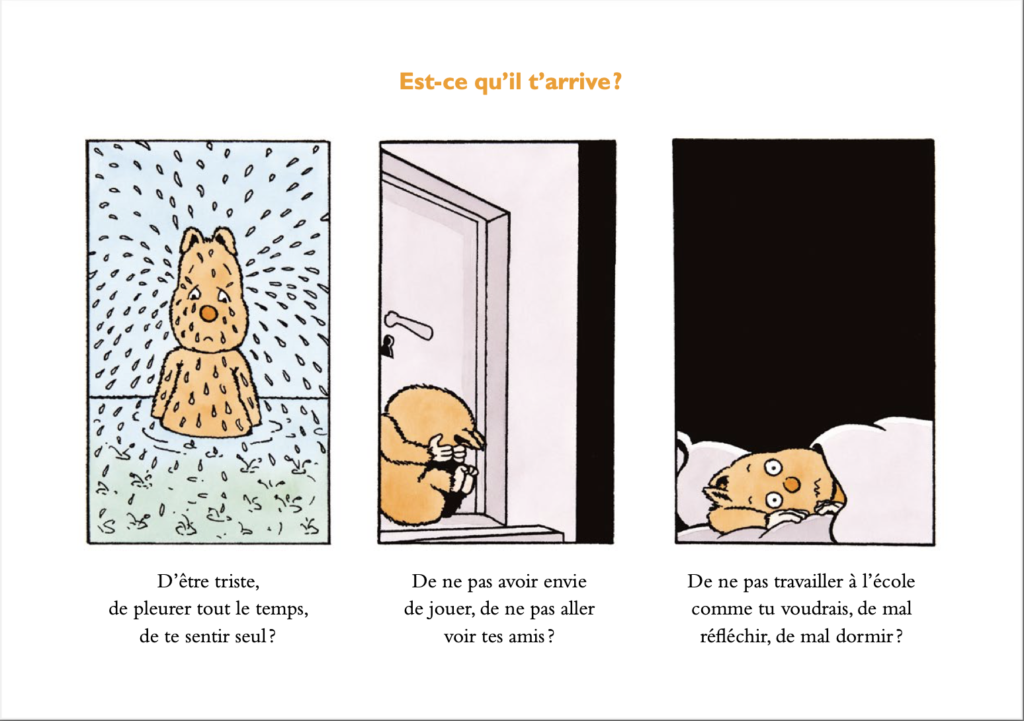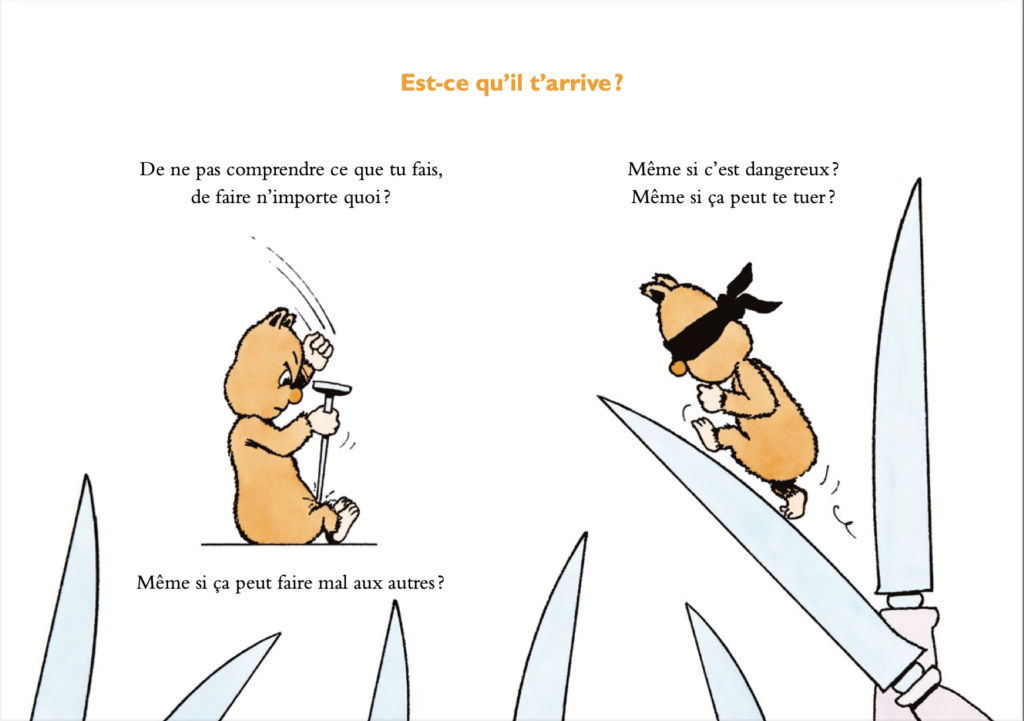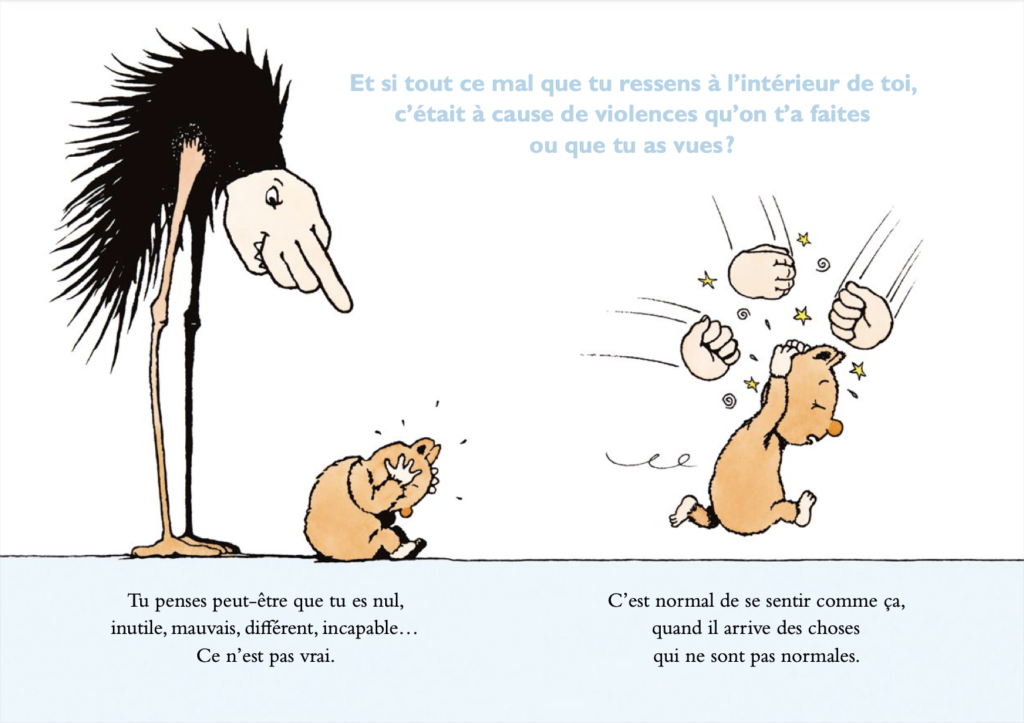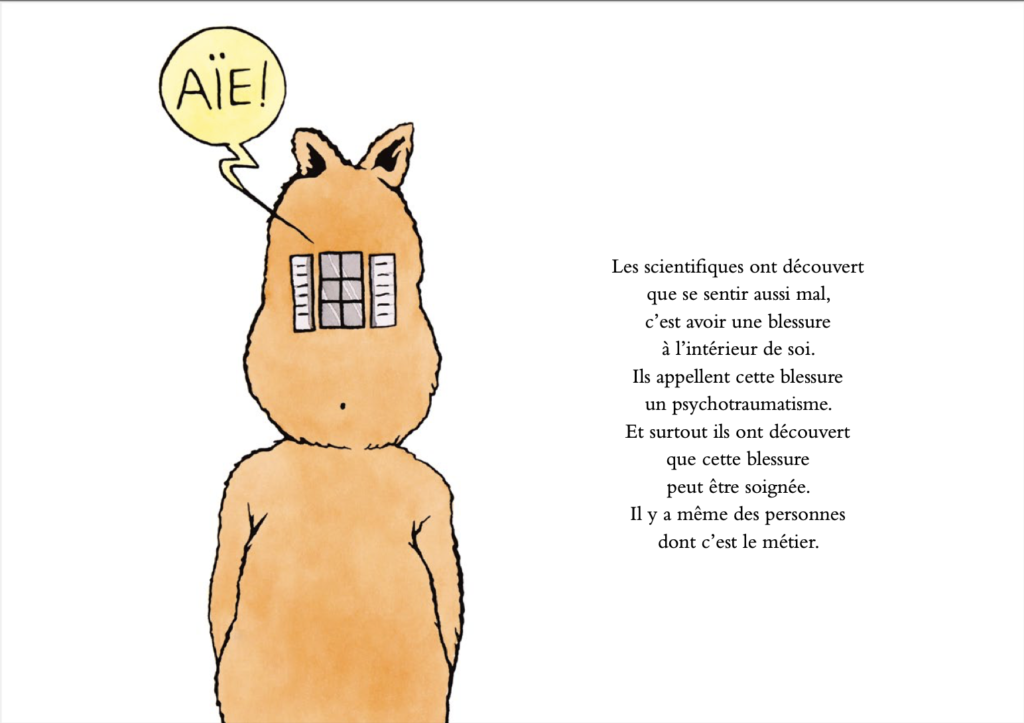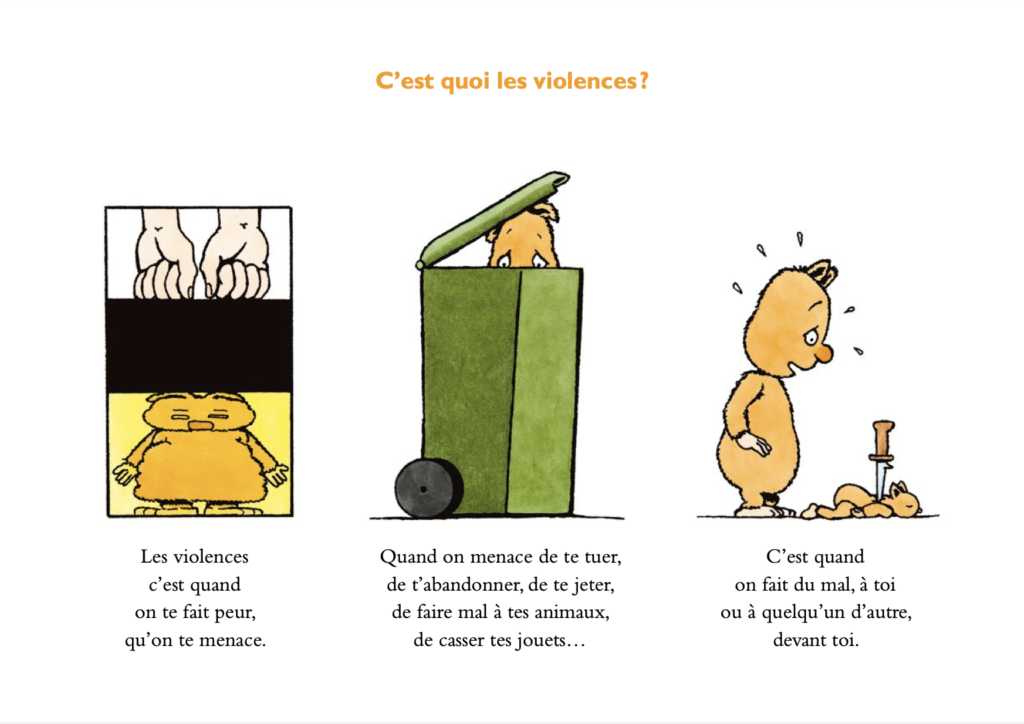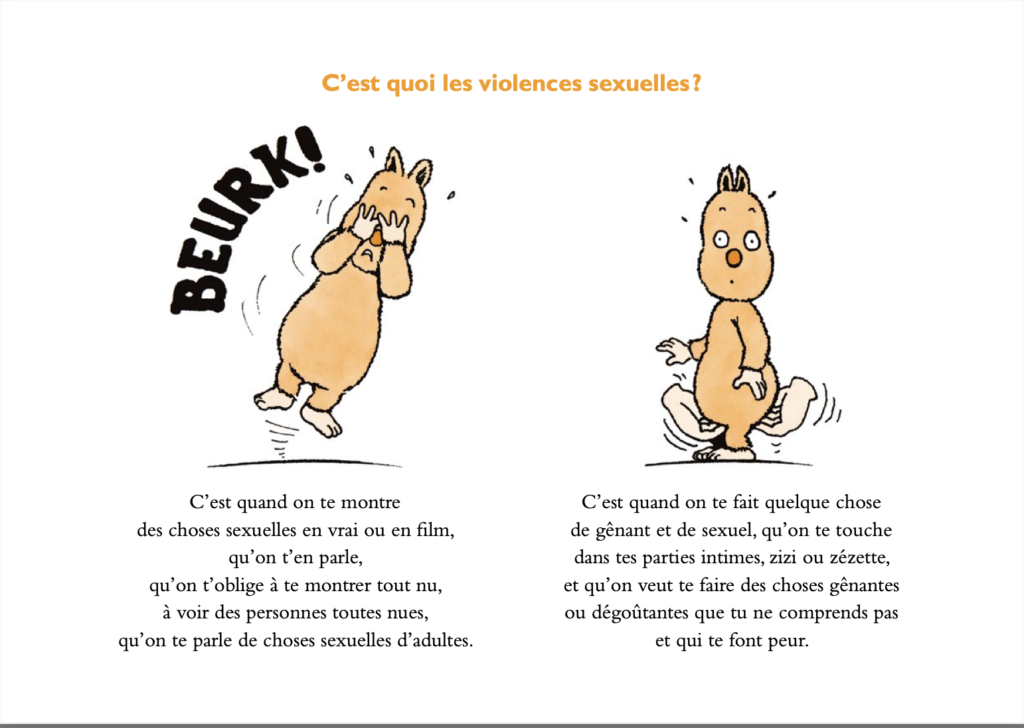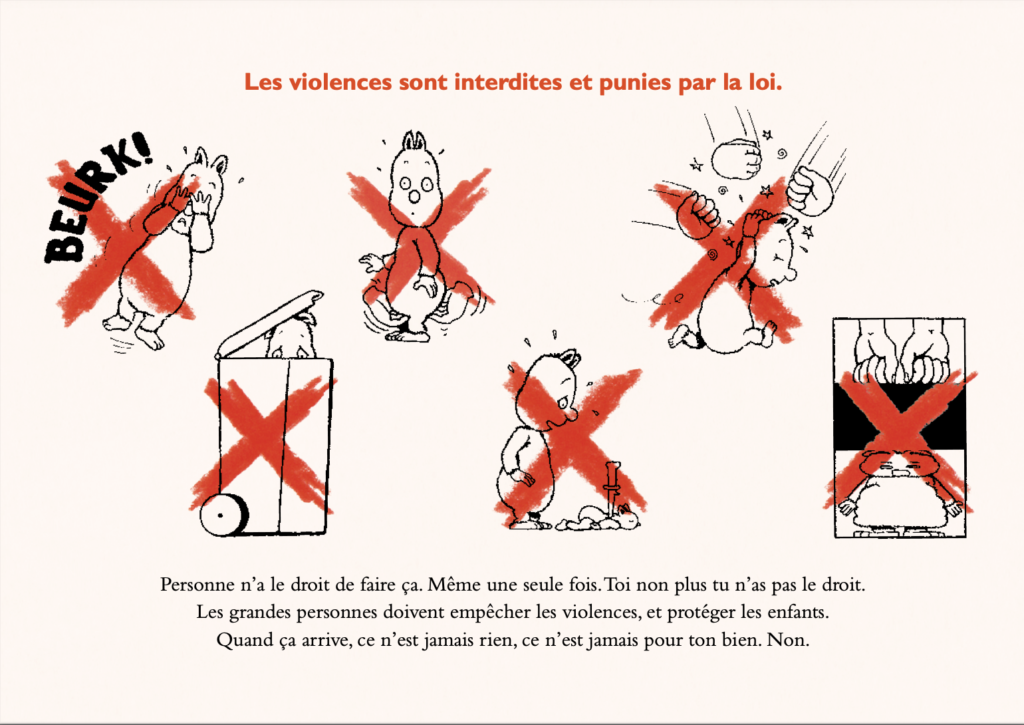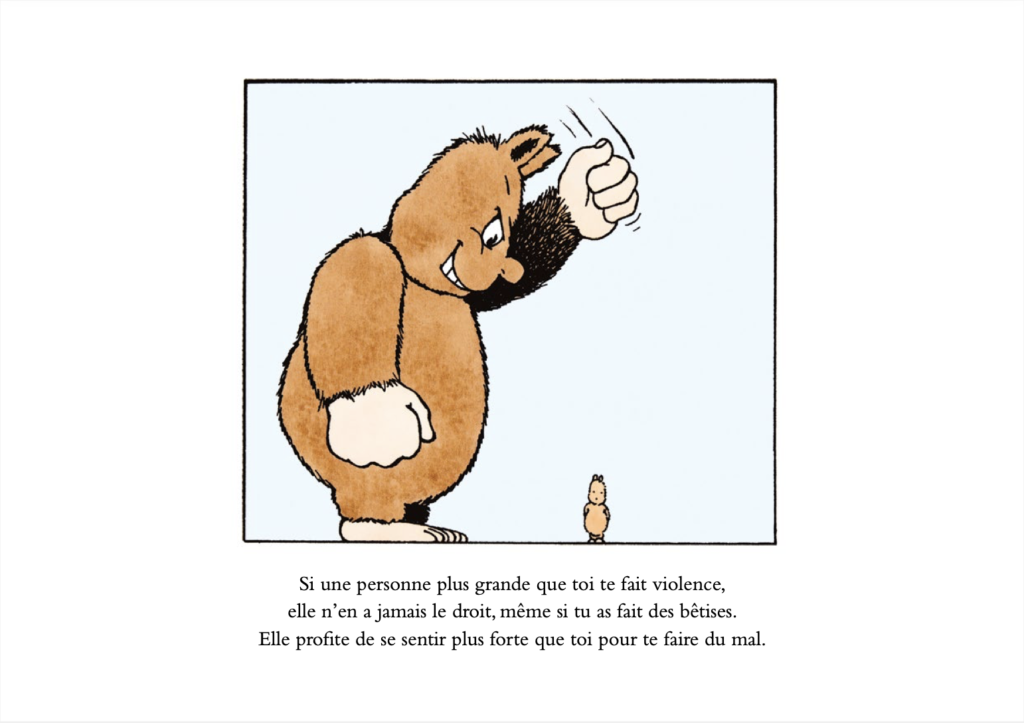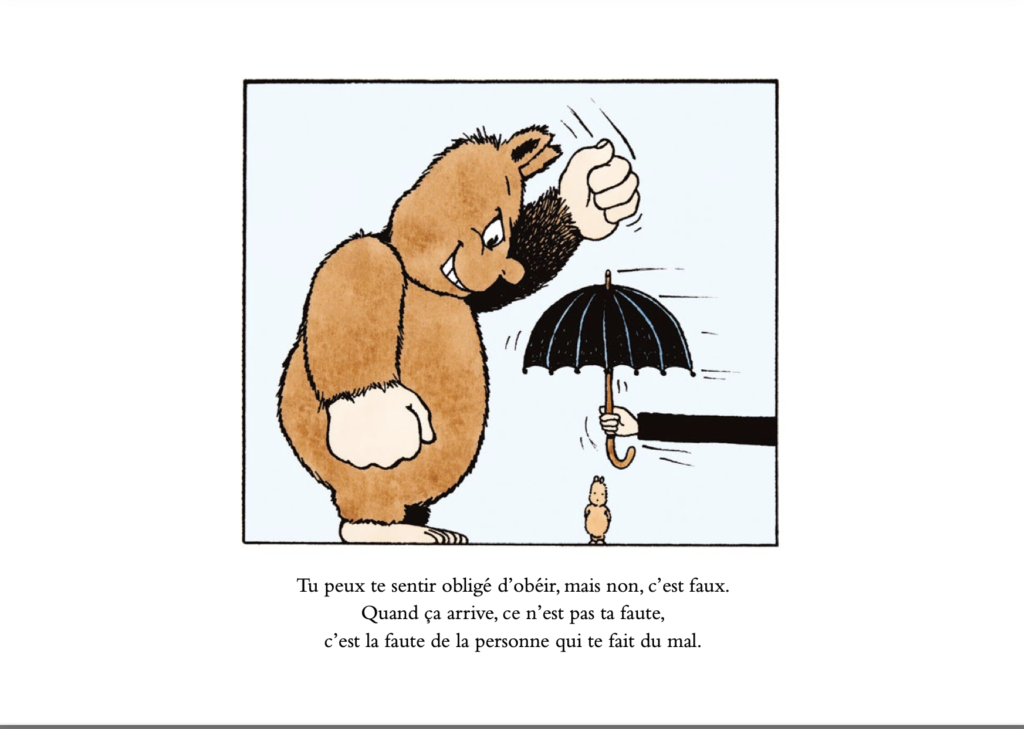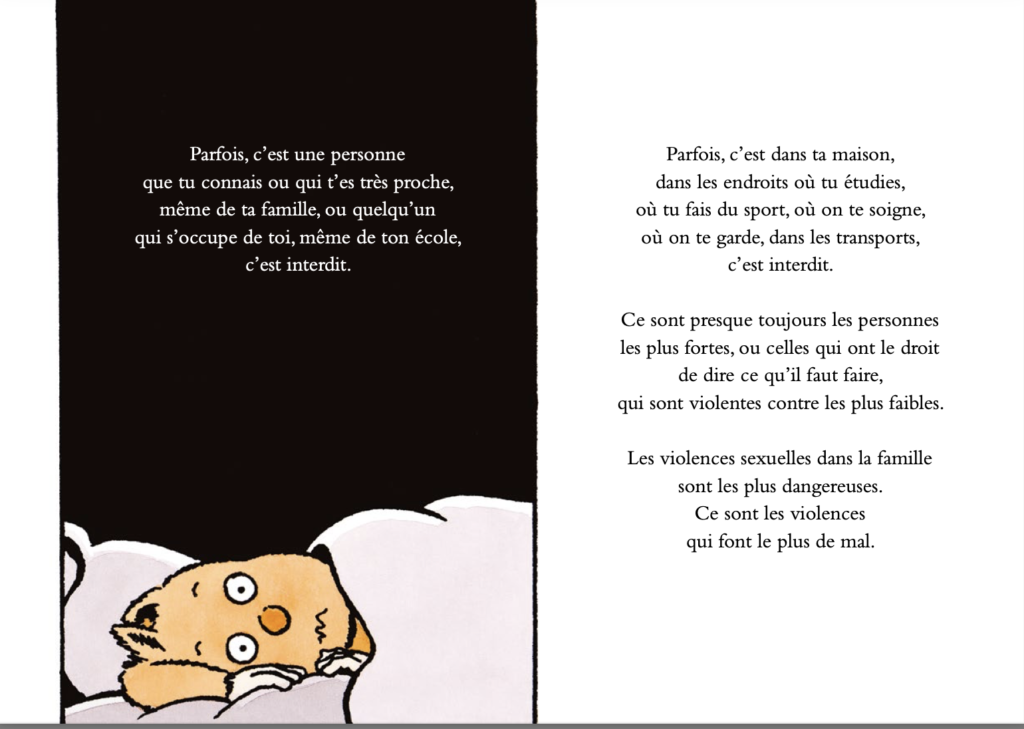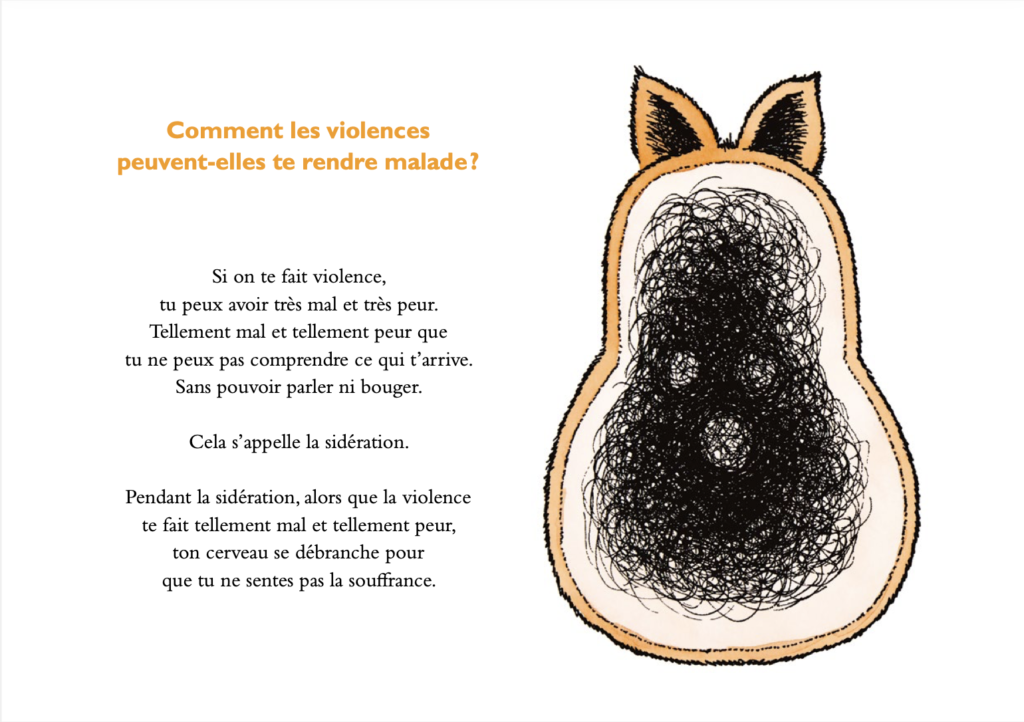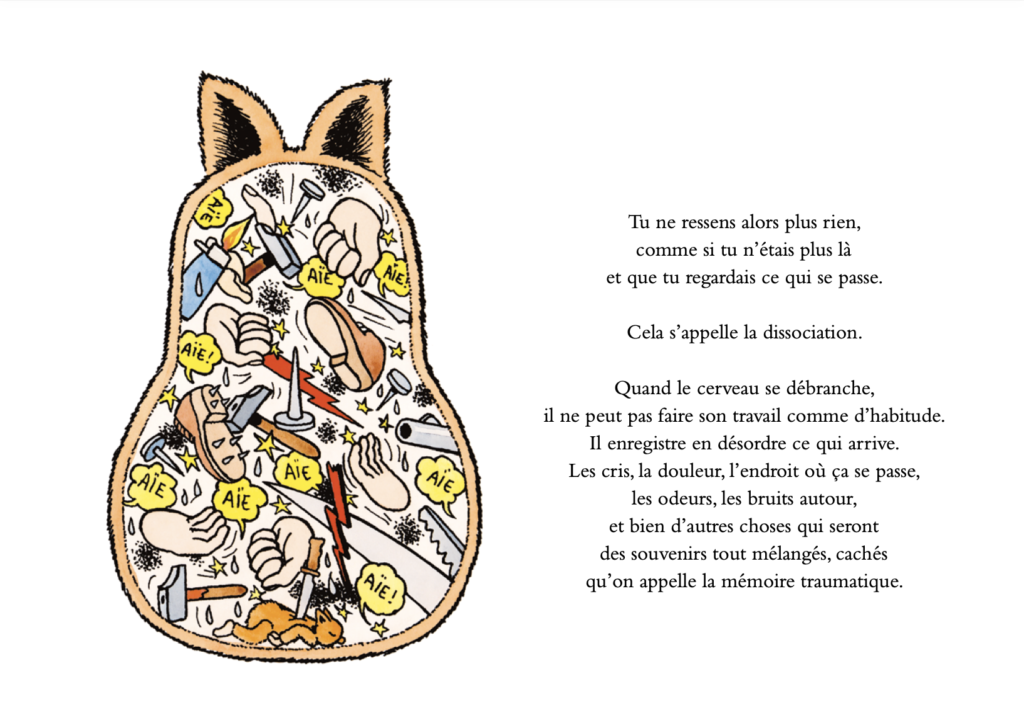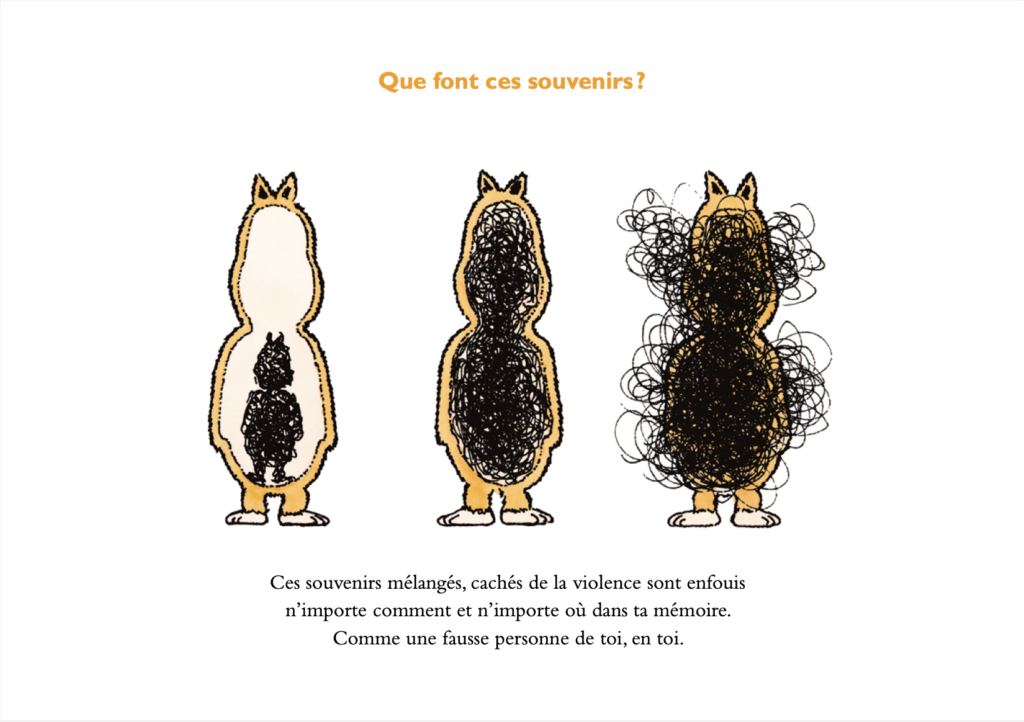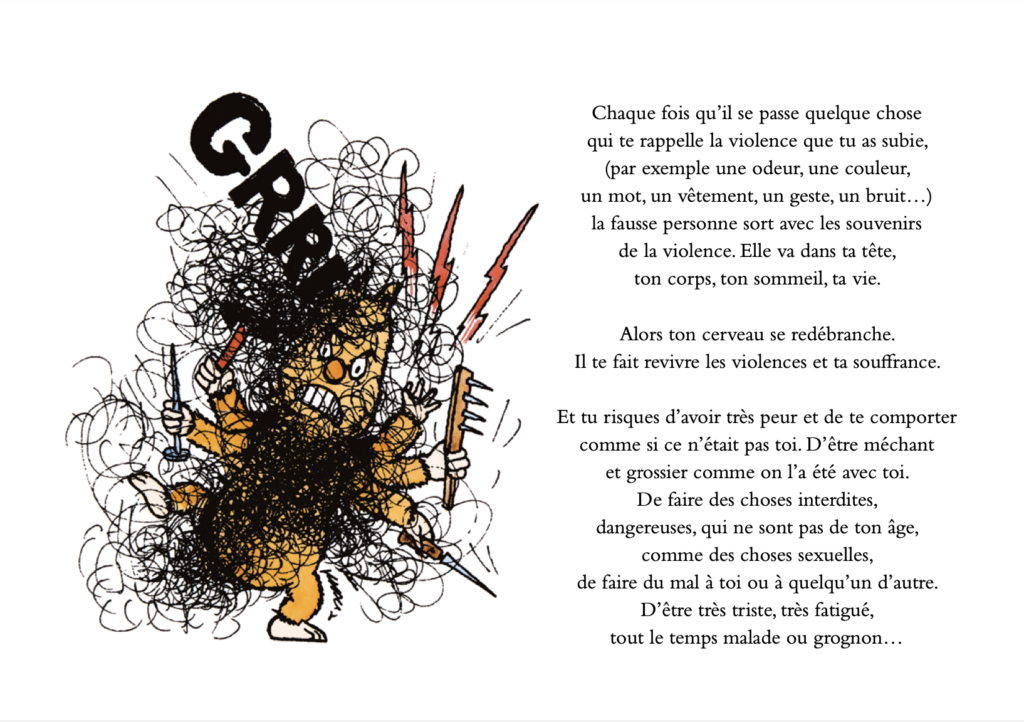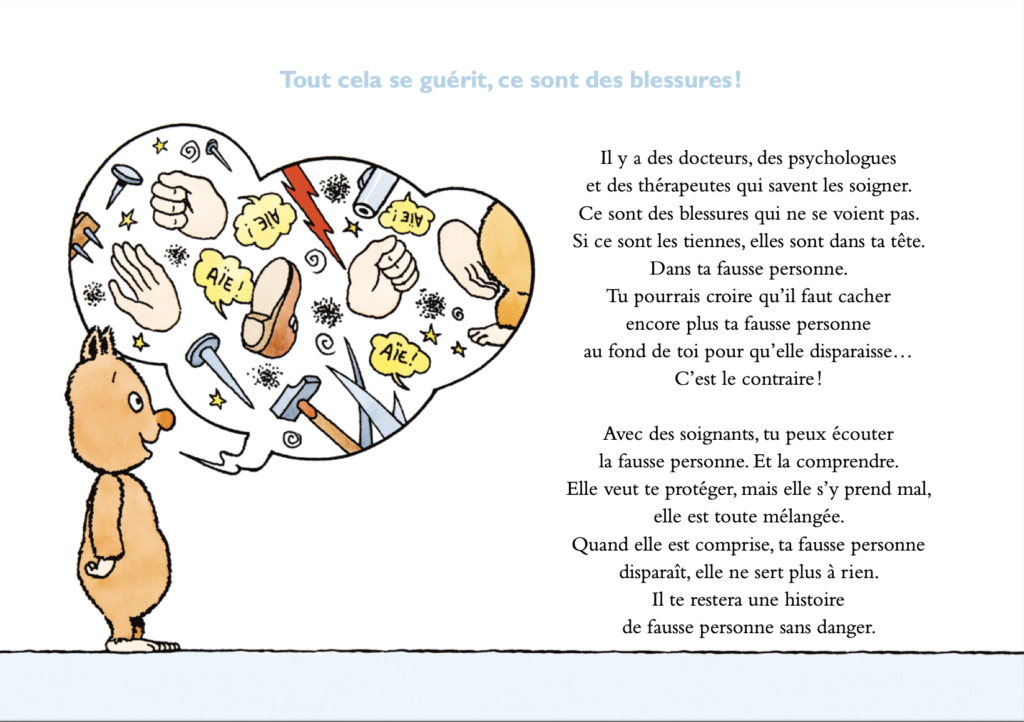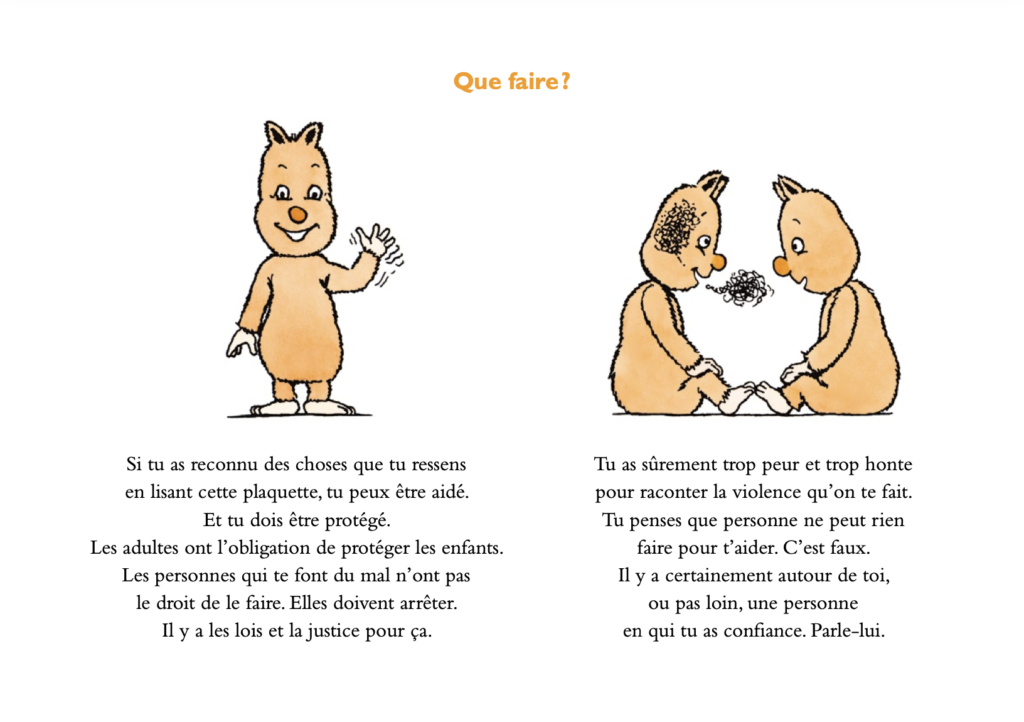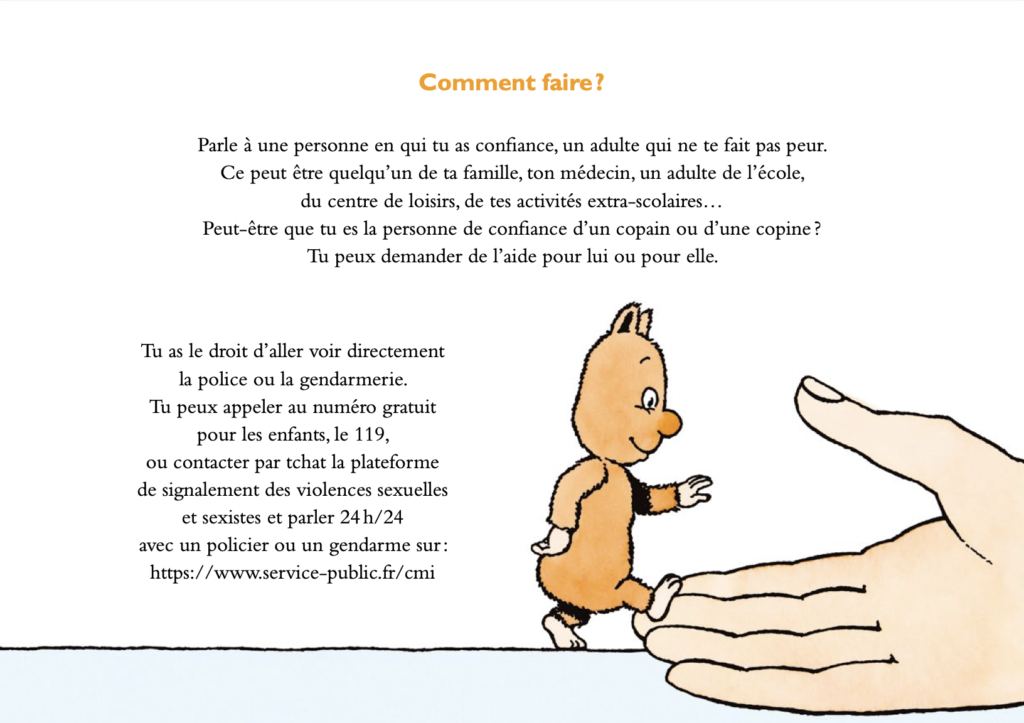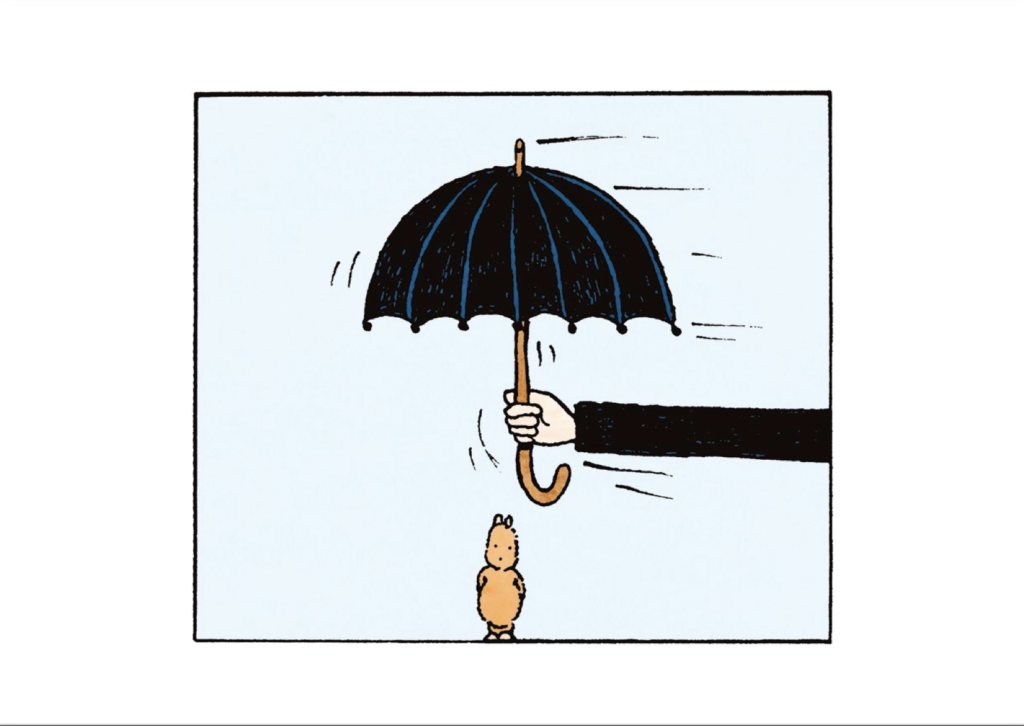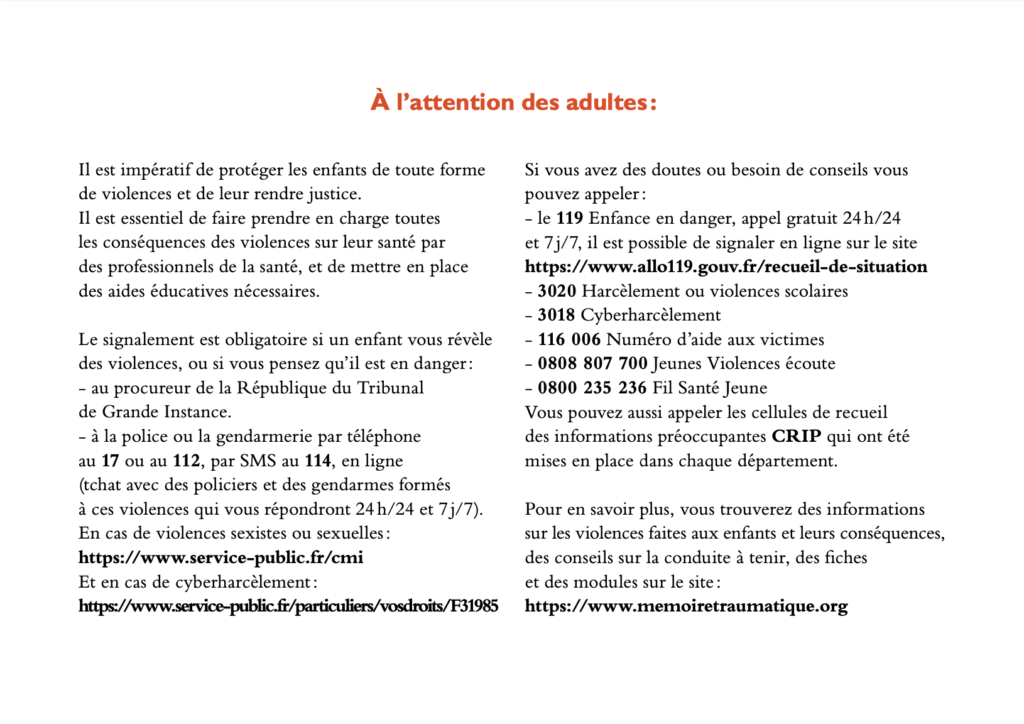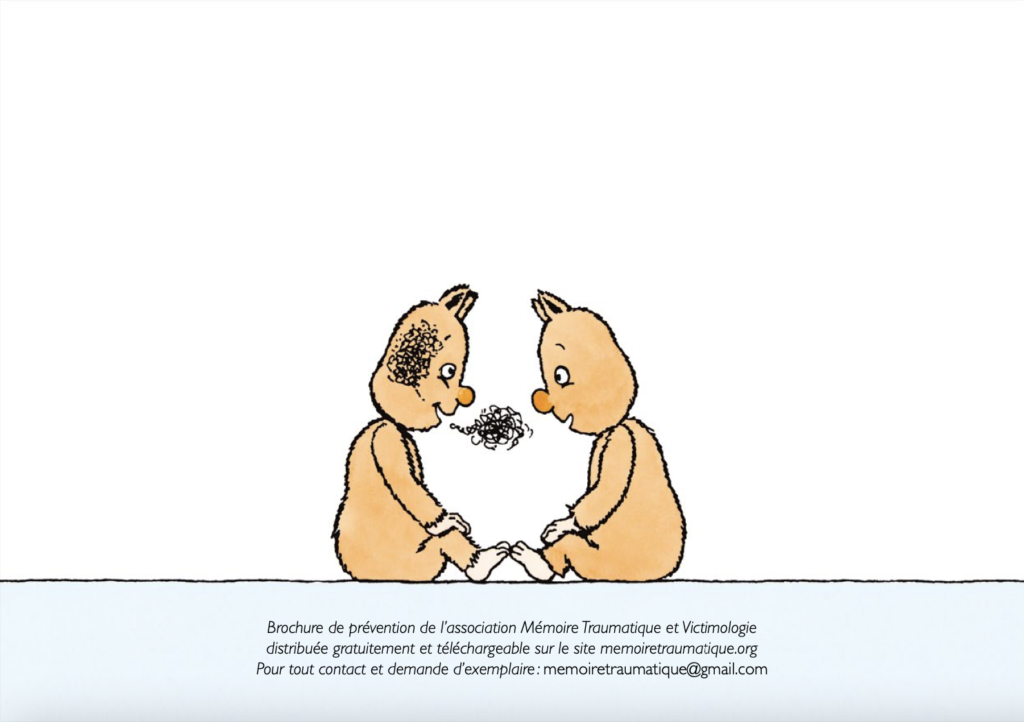To distinguish good from evil is learned. But what can we do if those who should have given us the keys to this vital knowledge are actually the ones who hurt us? It is therefore very difficult for child victims of violence to locate and expose deviant and violent behaviour, especially when it is committed by a family member, the entourage, a teacher or a doctor… Giving the necessary resources to the small The Traumatic Memory and Victimization Association has developed a booklet entitled When you’re hurt, illustrated by the famous children’s illustrator Claude Ponti. A valuable initiative to support child victims of violence and adults who want to help them. Find out in free access at the end of this article.
When you’re hurt, is aimed at very young children, from kindergarten to CE1. The purpose of this prevention and information booklet is not only to help them determine whether they have been victims of violence, but also to help them discover the consequences this can have for themselves and their behaviour.
It brings together the intelligent and sensitive lyrics of Dr. Muriel Salmona, psychiatrist specializing in psychotraumatology in children and adults (President of the Association for Traumatic Memory and Victimization, member of the CIIVISE) and Sokhna Fall, specialized family therapist in the treatment of domestic violence, victimologist, ethnologist and Vice-President of the association . All portrayed by the famous illustrator of children’s books Claude Ponti.
A prevention tool
Through the pages, the child discovers what the violence it may have faced looks like (physical, psychological, sexual, etc.), who caused it (a parent, an adult in his family circle, a teacher or a doctor…), but also and above all what impact they can have on him in the long term and the importance of exposing them in order to be treated. Indeed, the authors approach the concept of psychotrauma to explain that these invisible wounds can destroy our lives, but they can be treated.
The book enables children to understand that feelings and behaviors torment them, make them feel guilty, make them feel ashamed, isolate them and make them think that they are not like the others and that they do not deserve to live or be loved. are linked to violence and are its normal and universal consequences. This information is needed to better manage their feelings, to relax, to reconcile with themselves, to do justice, to find inner cohesion, self-confidence and self-esteem.
press release
For Dr Muriel Salmona, “it is a tool that should be made available to as many people as possible in order to make it a tool for prevention, education and detection of violence”† For child victims, the book is a tool for psychoeducation and support, for others it can be a good resource to help a friend in need. Finally, the association explains in its press release that the book is also intended for anyone who works with or accompanies children:
- health and care professionals,
- professionals in the health, social and medico-social sectors,
- childcare and child protection professionals,
- National Education Professionals, professionals or volunteers from the associative sectors and leisure and sports activities,
Finally, it can also be used more widely as a prevention and support tool for parents to talk to their child about anything that can traumatize him, and to better understand and support him if he is a victim of violence.
Since April 2022, the booklet has been distributed free of charge by the association Mémoire traumatique et victimologie. To receive it, you can request it by email: [email protected] It can also be downloaded here in PDF or consulted in its entirety below:
